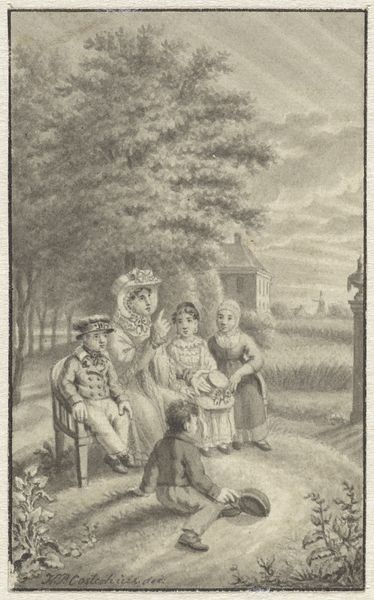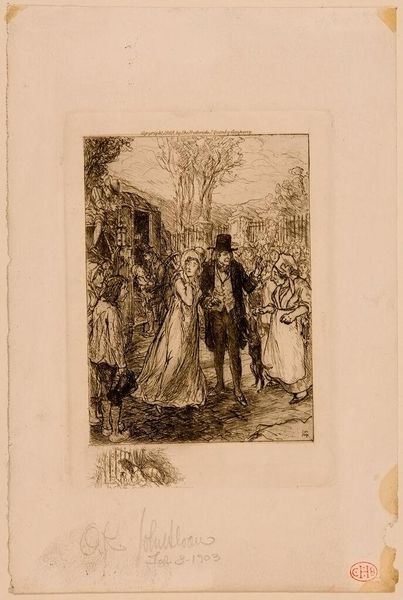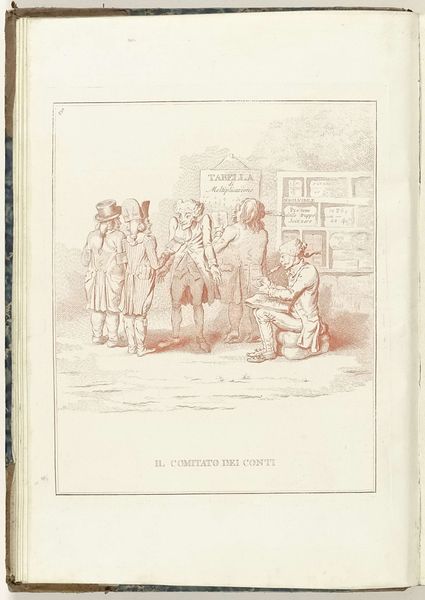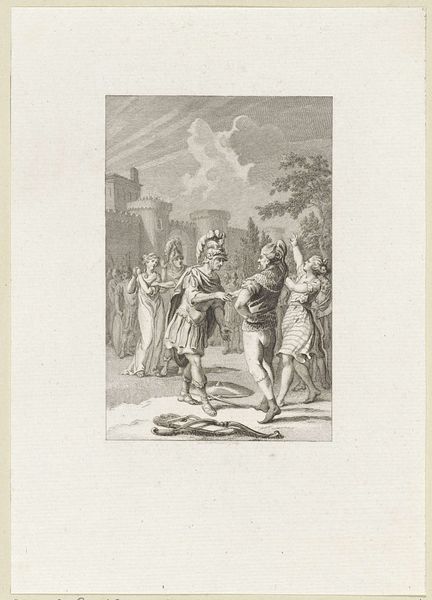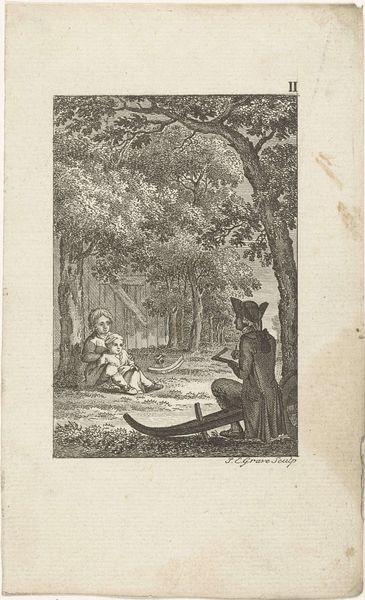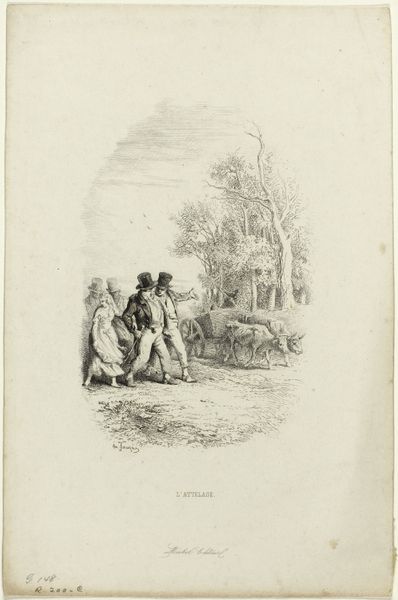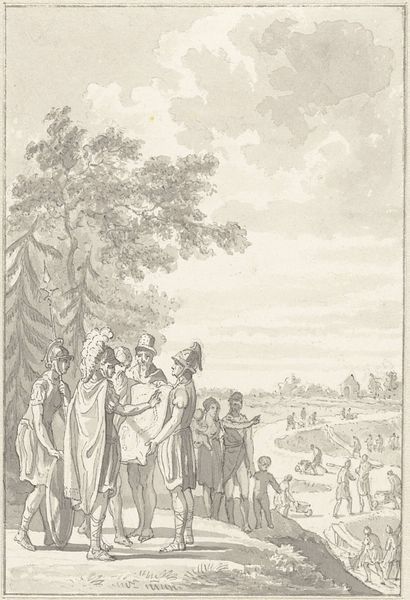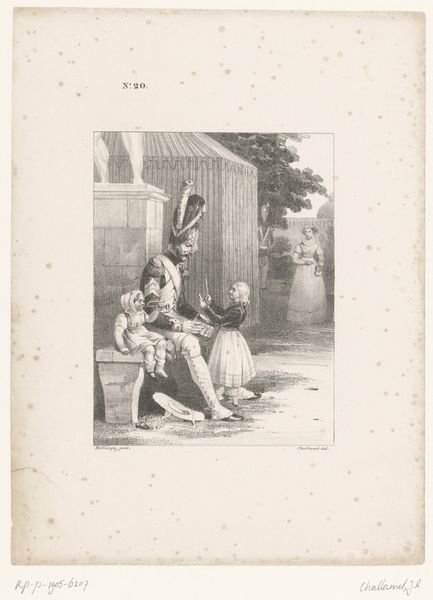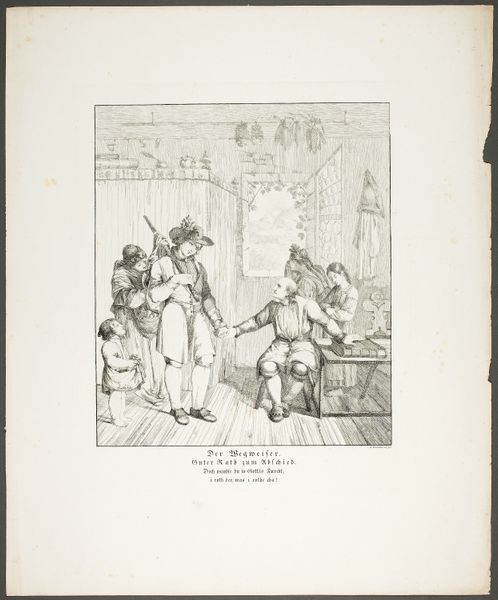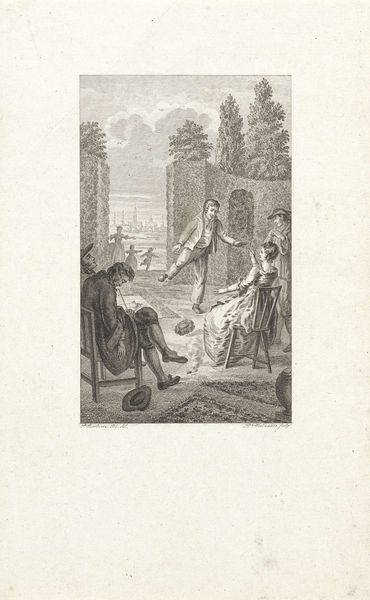
drawing, pencil
#
drawing
#
landscape
#
figuration
#
romanticism
#
pencil
#
genre-painting
Copyright: Rijks Museum: Open Domain
Curator: This pencil drawing, "Paar op een brug voor een huis," or "Couple on a Bridge in Front of a House," is attributed to Hendrik Abraham Klinkhamer and dates from the period 1820 to 1872. What are your initial thoughts about it? Editor: It has a quaint charm to it, almost like a scene from a storybook. The family grouped near the tree, the couple on the bridge... What I find interesting is the contrast between the couple, who seem to be moving forward, and the static group. What do you make of that? Curator: That tension is key. Klinkhamer, working in the Romantic era, was interested in the domestic sphere and social roles. Think about the gendered expectations of that time. How might this composition reflect or even subtly critique them? Are the women positioned to fulfill these societal expectations, while the younger couple perhaps yearn to break away from such constraint? Editor: That's a really interesting point. It's like the drawing is staging a kind of confrontation between tradition and the possibility of a different future. The older women do appear rather trapped to expectations with all that rigid sitting, compared to the couple moving. The girl seems to be walking into her doom, now that I look more into it, she may not be walking but she is BEING walked, by her lover. Curator: Exactly! And the setting – the bridge as a liminal space, the house representing domesticity. The drawing may actually highlight tensions inherent within social structures by utilizing them for a visual tension that seems almost... unfair. We need to really study the figures that surround the couple, they provide visual background to suggest her possible imprisonment. Editor: I see what you mean! Now it all comes together. It’s amazing how much the social context informs our reading of what seems like a simple, charming scene. I will definitely be looking to feminist theory for any painting in the future! Curator: Precisely. By examining the historical and social landscape, we move beyond just aesthetic appreciation to a deeper understanding of the artwork's engagement with power dynamics and social norms. Thank you.
Comments
No comments
Be the first to comment and join the conversation on the ultimate creative platform.

